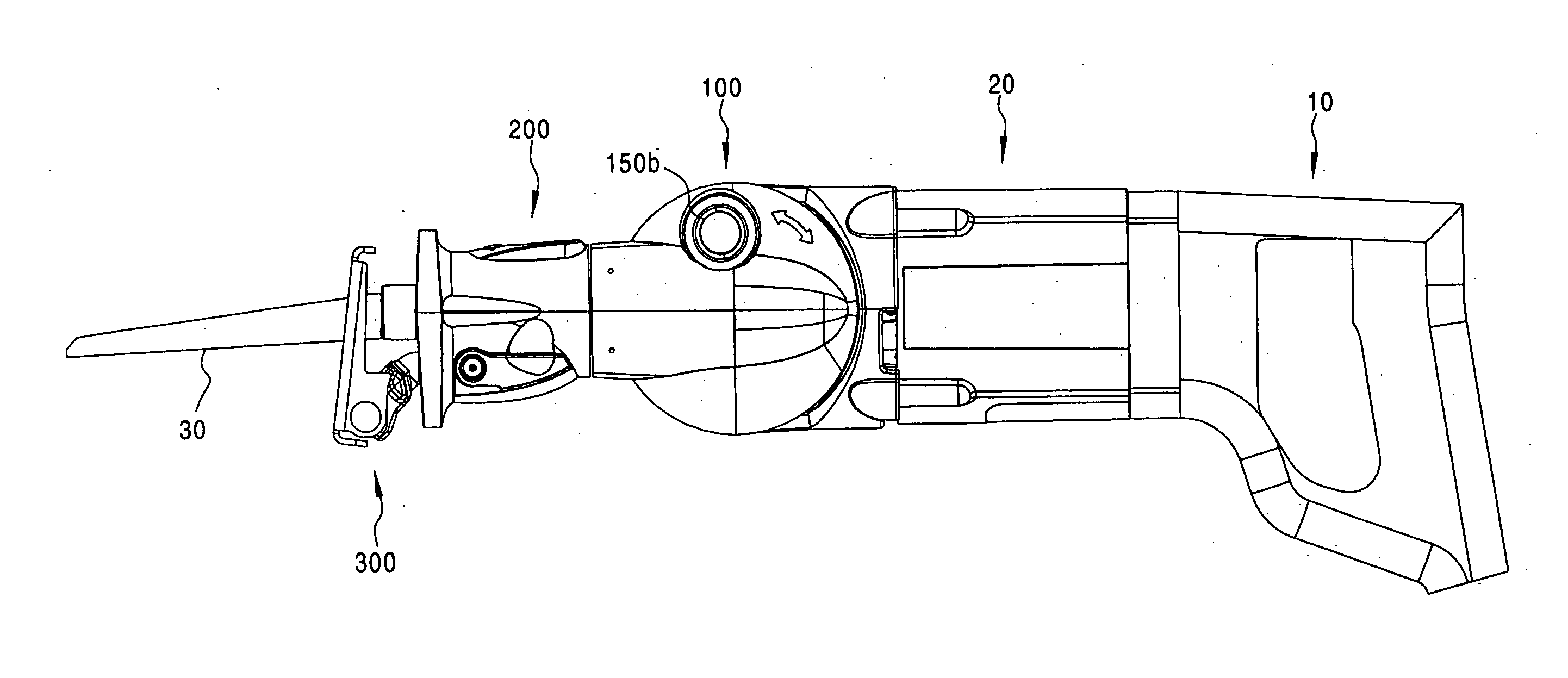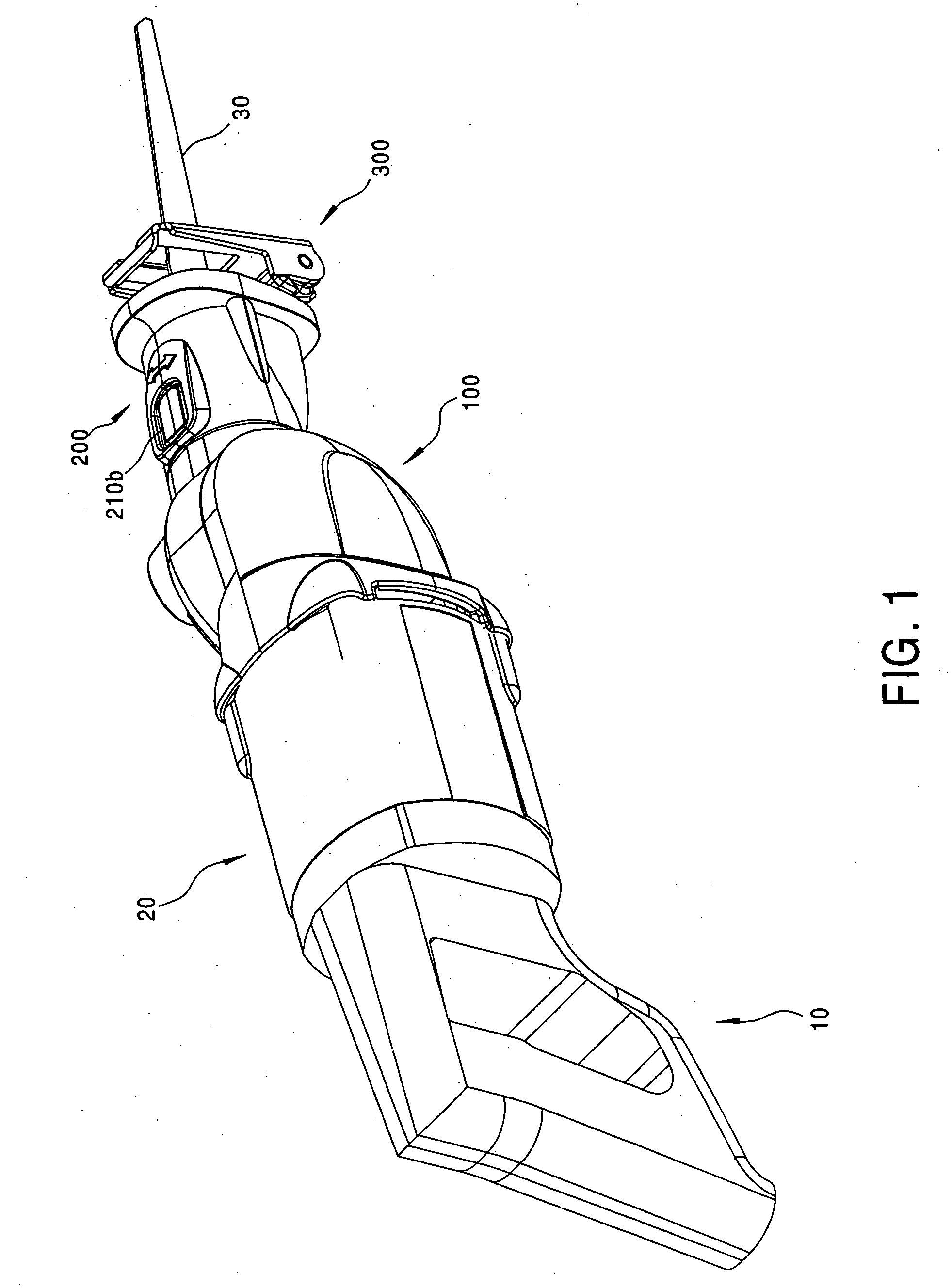Bearing for a reciprocating shaft of a reciprocating saw
a reciprocating saw and shaft technology, applied in the field of power tools, can solve the problems of difficult use of traditional reciprocating saws in cramped quarters, inconvenient use of traditional reciprocating saws, and inability to meet the needs of tradesmen, so as to increase the versatility of reciprocating saws, increase the number of tasks, and maintain or improve the effect of efficiency
- Summary
- Abstract
- Description
- Claims
- Application Information
AI Technical Summary
Benefits of technology
Problems solved by technology
Method used
Image
Examples
Embodiment Construction
[0046] To illustrate the invention, a preferred embodiment of a reciprocating saw which is a composite of all of the individual features of the invention will be described in detail. However, each of the individual features of the invention may be used separately or in combination with only some of the other features, as will be recognized by those skilled in the art. The scope of protection of the invention is not intended to be limited to a saw embodying all or most of the individual features of the invention, but encompasses any saw which incorporates any of the individual features of the invention as separately recited in the appended claims.
[0047] The term reciprocating saw as used herein shall be construed to mean any saw with a saw blade that has at least a back-and-forth, i.e., reciprocating, motion in a direction generally parallel to the longitudinal axis of the saw blade. Thus, for example, orbital action saws having more than one component of motion are reciprocating sa...
PUM
| Property | Measurement | Unit |
|---|---|---|
| pivot angle | aaaaa | aaaaa |
| pivot angle | aaaaa | aaaaa |
| distance | aaaaa | aaaaa |
Abstract
Description
Claims
Application Information
 Login to View More
Login to View More - R&D
- Intellectual Property
- Life Sciences
- Materials
- Tech Scout
- Unparalleled Data Quality
- Higher Quality Content
- 60% Fewer Hallucinations
Browse by: Latest US Patents, China's latest patents, Technical Efficacy Thesaurus, Application Domain, Technology Topic, Popular Technical Reports.
© 2025 PatSnap. All rights reserved.Legal|Privacy policy|Modern Slavery Act Transparency Statement|Sitemap|About US| Contact US: help@patsnap.com



